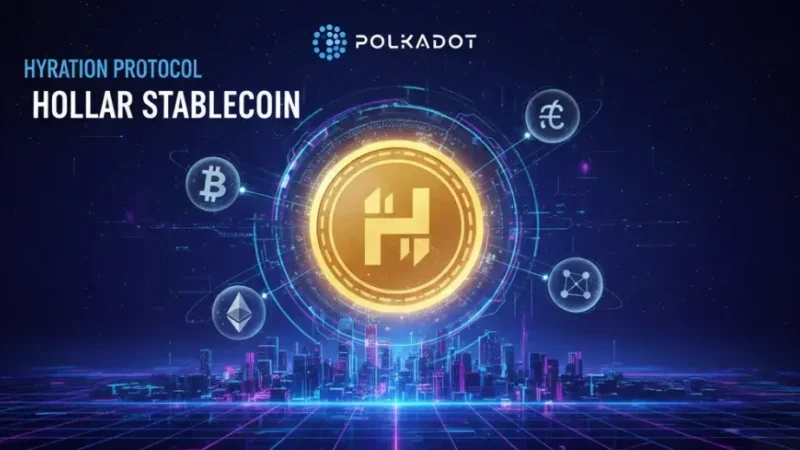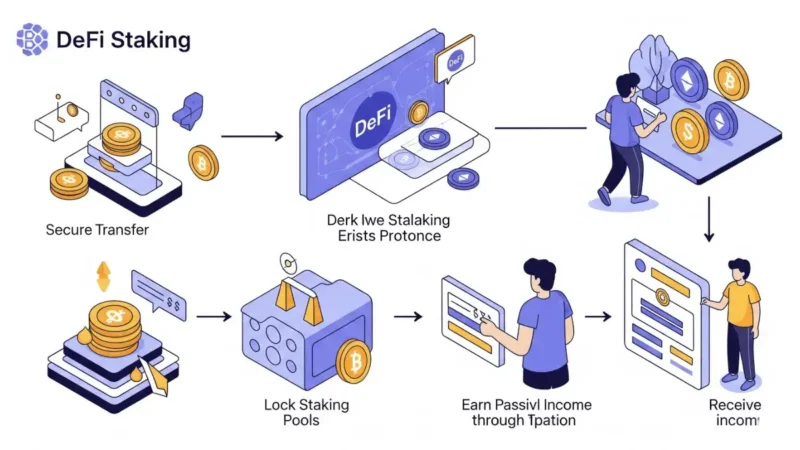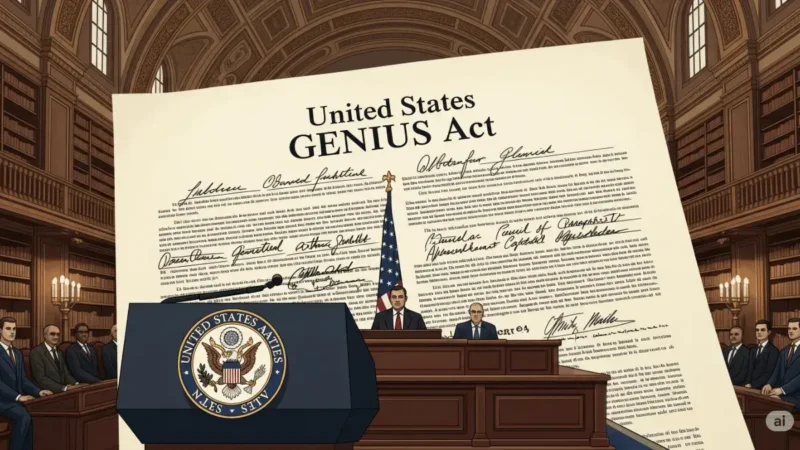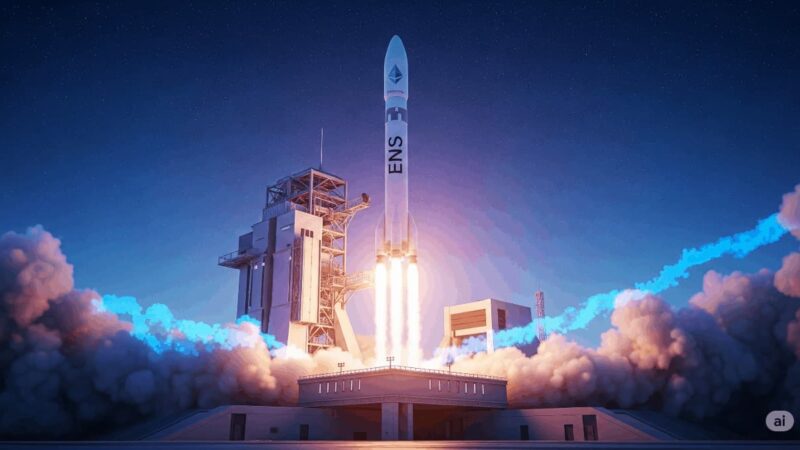AllUnity’s EURAU: Ushering in a New Era of Regulated Stablecoins in Europe
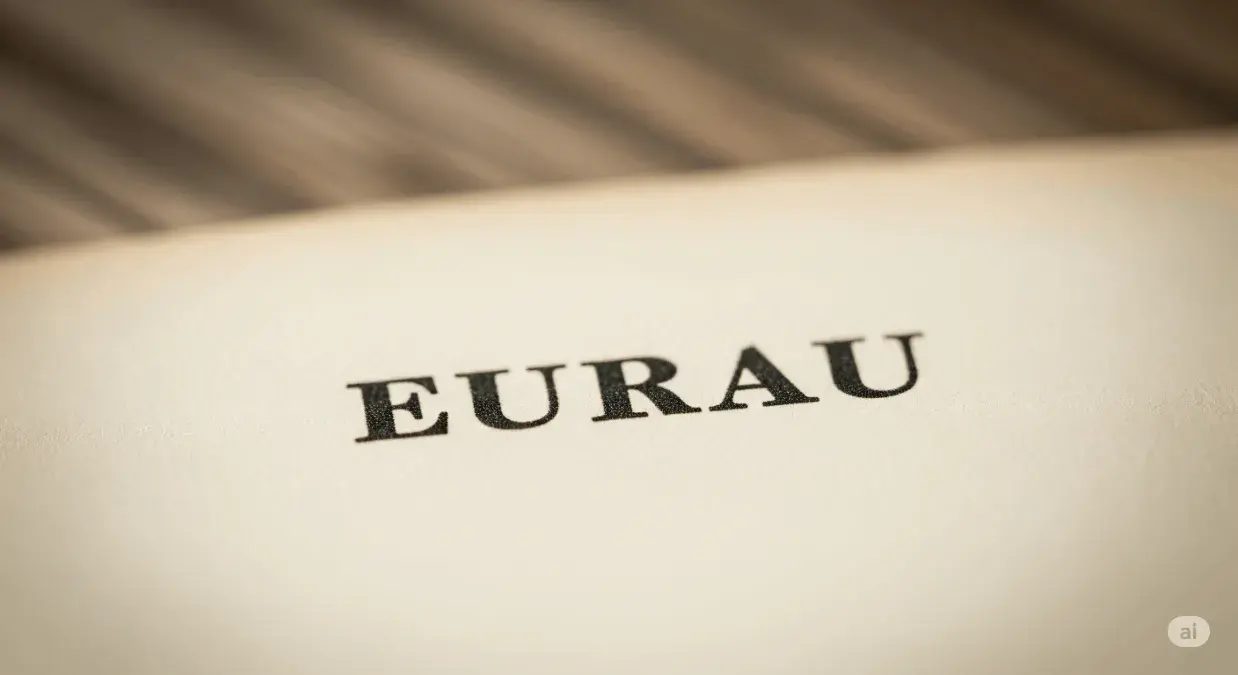
The European digital asset landscape is undergoing a monumental transformation, driven by the recent implementation of the Markets in Crypto-Assets Regulation (MiCA). In a significant development that underscores this shift, AllUnity, a joint venture between financial titans DWS and Deutsche Bank, has officially received an E-Money Institution (EMI) license from Germany’s financial regulator, BaFin. This landmark approval paves the way for the issuance of EURAU, a fully regulated euro-pegged stablecoin, poised to redefine the standards of stability, transparency, and compliance within the European market.
The entry of EURAU is not merely another stablecoin launch; it signifies a strategic move by established financial institutions into the digital asset space, aiming to provide a robust and trustworthy alternative in a market previously dominated by less-regulated players. With MiCA regulations now firmly in effect across the EU, EURAU is positioned as a serious contender, directly addressing the growing demand for compliant digital assets from financial institutions, fintechs, and enterprise clients.
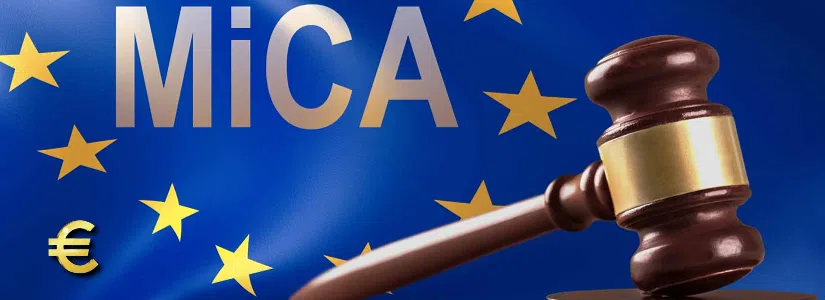
The Dawn of MiCA: A Regulatory Game Changer
The formal implementation of the EU’s Markets in Crypto-Assets Regulation (MiCA) on December 30, 2024, has fundamentally reshaped the regulatory environment for crypto assets across the European Economic Area. This comprehensive framework introduces stringent compliance standards, particularly for stablecoin issuers. The ripple effects of MiCA have already been observed, with major exchanges like Binance and Coinbase removing non-compliant stablecoins such as Tether’s USDt for European users. As Tether continues to operate outside the MiCA framework, the market is actively seeking regulated alternatives.
This regulatory vacuum has created a fertile ground for MiCA-compliant stablecoins to flourish. Circle’s Euro Coin (EURC) and Paxos’s USDG have been steadily gaining traction, and now, AllUnity’s EURAU enters the fray, backed by the formidable reputations of Deutsche Bank and DWS. This convergence of regulatory clarity and institutional involvement marks a pivotal moment, signaling a maturation of the digital asset market in Europe.
EURAU: Built for Institutional Trust and Transparency
AllUnity’s EURAU is engineered with institutional-grade transparency at its core, a crucial differentiator in a market often scrutinized for its lack of oversight. Backed by Galaxy Digital, the stablecoin is designed for seamless integration into institutional financial systems, fintech services, and corporate treasury operations. A key aspect of EURAU’s appeal lies in its commitment to full audits of proof-of-reserves and real-time financial disclosures, meeting the stringent regulatory and transparency standards that traditional financial institutions expect.
Furthermore, the involvement of Flow Traders in providing liquidity ensures that EURAU will be a highly liquid asset, facilitating efficient and cost-effective transactions for its target audience. This combination of robust backing, rigorous transparency, and deep liquidity positions EURAU as a dependable and efficient instrument for various financial operations. Beyond its foundational compliance and transparency, EURAU also incorporates blockchain-native features, enhancing interoperability across decentralized platforms and enabling seamless cross-border transactions involving euro-denominated digital assets. This forward-looking design ensures that EURAU is not only compliant with current regulations but also prepared for the evolving landscape of decentralized finance.
Banking Giants Step In: A Paradigm Shift for Digital Assets
The direct involvement of Deutsche Bank and DWS in the AllUnity joint venture offers EURAU a significant competitive advantage that extends far beyond mere regulatory compliance. Their presence brings deep-rooted European financial infrastructure, unparalleled brand credibility, and longstanding relationships with enterprise clients – attributes that many existing stablecoin issuers simply cannot replicate. This signifies a broader transition within the digital asset space, indicating that as regulatory clarity increases, institutional players are no longer just observing but actively stepping in to redefine the stablecoin market.
This institutional endorsement provides a strong foundation of trust that is paramount for widespread adoption among corporations and financial entities. The established networks and reputation of Deutsche Bank and DWS will undoubtedly accelerate the integration of EURAU into various financial ecosystems, offering a bridge between traditional finance and the burgeoning digital economy. The move by such prominent banking giants into the stablecoin arena underscores a growing belief in the long-term viability and transformative potential of digital assets, particularly those that adhere to rigorous regulatory frameworks. EURAU exemplifies this new wave of regulated digital money, where financial transparency, robust risk controls, and comprehensive oversight are not optional, but foundational principles.
Europe as a Strategic Battleground for Regulated Stablecoins
Europe has rapidly emerged as a strategic battleground for regulated stablecoins. The proactive stance taken by the EU with MiCA has created a distinct environment compared to other jurisdictions, attracting innovators focused on compliance and stability. The removal of non-compliant stablecoins from major exchanges for European users has left a clear path for regulated alternatives like EURAU to capture significant market share.
This regulatory landscape is fostering healthy competition among compliant issuers, driving innovation and raising the bar for operational excellence. The focus on euro-pegged stablecoins is particularly significant given the euro’s status as the world’s second-largest reserve currency. A highly liquid and widely adopted euro stablecoin like EURAU has the potential to facilitate a new era of efficient and secure cross-border payments within the Eurozone and beyond. The strategic positioning of EURAU within this evolving European ecosystem is critical for its long-term success and its potential to become a leading digital currency for institutional use.
The Future Utility of EURAU: Tokenized Payments and Programmable Finance
If adoption accelerates, EURAU could eventually serve as a central instrument for a wide array of innovative financial applications. Its regulated nature and institutional backing make it an ideal candidate for facilitating tokenized payments, enabling real-time settlements, and powering programmable finance. Imagine a future where complex financial agreements and transactions are executed automatically on the blockchain, with EURAU serving as the frictionless medium of exchange.
This vision extends to seamless blockchain-based operations across Europe’s evolving financial system. From supply chain finance to cross-border remittances, the efficiency and transparency offered by EURAU could unlock significant value and drive down costs. The ability to integrate EURAU into enterprise resource planning (ERP) systems and other corporate treasury operations further solidifies its potential as a foundational building block for the future of digital finance. The collaboration with Galaxy Digital and Flow Traders also hints at the broader ambition to ensure EURAU’s interoperability within the decentralized finance (DeFi) ecosystem, bridging the gap between traditional finance and cutting-edge blockchain applications. This dual focus on institutional integration and decentralized compatibility positions EURAU as a versatile tool for the future of money.
The significance of EURAU extends beyond its immediate utility as a stablecoin. It represents a tangible manifestation of the increasing convergence between traditional financial infrastructure and distributed ledger technology. As regulatory frameworks continue to mature globally, the blueprint established by MiCA and the proactive steps taken by entities like AllUnity with EURAU will likely serve as a model for other jurisdictions. The success of EURAU could pave the way for a more integrated, efficient, and transparent global financial system, powered by regulated digital assets. This is a critical step towards realizing the full potential of blockchain technology in mainstream finance, fostering a more resilient and accessible financial future for all.
Stay informed, read the latest crypto news in real time!
Conclusion: A New Horizon for Euro Stablecoins
The launch of EURAU by AllUnity, backed by DWS and Deutsche Bank, under the stringent MiCA framework, marks a pivotal moment for the European digital asset market. It signifies a clear shift towards regulated, transparent, and institutionally-backed stablecoins, offering a credible alternative to existing players. With its focus on institutional-grade transparency, seamless integration into existing financial systems, and adherence to the highest regulatory standards, EURAU is well-positioned to become a cornerstone of Europe’s evolving digital economy. As the global financial landscape continues to embrace tokenization and blockchain technology, EURAU stands as a testament to the future of compliant and reliable digital money. The journey for EURAU has just begun, but its potential to transform European finance is immense, promising a future of unprecedented efficiency and innovation.
